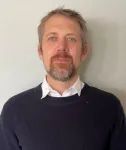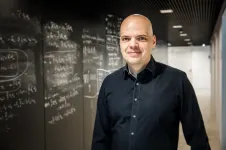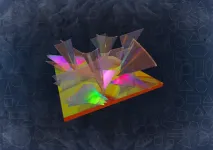A mandatory, legal requirement to recycle and reuse CRMs in select e-waste categories is needed to safeguard from supply disruptions elements essential to manufacturers of important electrical and electronic and other products, says a European consortium behind the report, led by the Switzerland-based World Resources Forum.
The CEWASTE consortium warns that access to the CRMs in these products is vulnerable to geo-political tides. Recycling and reusing them is "crucial" to secure ongoing supplies for regional manufacturing of electrical and electronic equipment (EEE) essential for defence, renewable energy generation, LEDs and other green technologies, and to the competitiveness of European firms.
Today, recycling most of the products rich in CRMs is not commercially viable, with low and volatile CRM prices undermining efforts to improve European CRM recycling rates, which today are close to zero in most cases.
The report (available post-embargo at cewaste.eu) identifies gaps in standards and proposes an improved, fully tested certification scheme to collect, transport, process and recycle this waste, including tools to audit compliance.
"A European Union legal framework and certification scheme, coupled with broad financial measures will foster the investments needed to make recycling critical raw materials more commercially viable and Europe less reliant on outside supply sources," says the consortium.
"Acceptance by the manufacturing and recycling industry is also needed, as the standards will only work when there is widespread adoption."
The report follows the 2020 EU action plan to make Europe less dependent on third countries for CRMs by, for example, diversifying supply from both primary and secondary sources while improving resource efficiency and circularity.
Adds the consortium: "By adopting this report's recommendations, the EU can be more self-sustaining, help drive the world's green agenda and create new business opportunities at home."
The project says the following equipment categories contain CRMs in concentrations high enough to facilitate recycling:
Printed circuit boards from IT equipment, hard disc drives and optical disc drives Batteries from WEEE and end of life vehicles Neodymium iron boron magnets from hard disc drives, and electrical engines of e-bikes, scooters and end-of-life vehicles (ELVs) Fluorescent powders from cathode ray tubes (CRTs; in TVs and monitors) and fluorescent lamps
Recovery technologies and processes are well established for some CRMs, such as palladium from printed circuit boards or cobalt from lithium-ion batteries.
For other CRMs, ongoing recycling technology development will soon make industrial scale operations possible but needs financial support and sufficient volumes to achieve cost-efficient operations.
Of 60+ requirements in European e-waste-related legislation and standards, few address the collection of CRMs in the key product categories, the consortium found.
They propose several additional technical, managerial, environmental, social and traceability requirements for facilities that collect, transport, and treat waste, for integration into established standards, such as the EU 50625-series.
The overall scheme was tested at European firms in Belgium, Italy, Portugal, Spain and Switzerland, as well as in Colombia, Rwanda and Turkey.
"Greater CRM recycling is a society-wide responsibility and challenge," says the consortium. "The relevant authorities must improve the economic framework conditions to make it economically viable."
CEWASTE project recommendations include:
Legislate a requirement to recycle specific critical raw materials in e-waste
Use market incentives to spur the economic viability of recovering CRMs and to stimulate the use of recovered CRMs in new products
Create platforms where demand for recycled components, materials and CRMs can meet supply
Raise awareness of the importance of CRM recycling
Consolidate fractions of CRM-rich products into quantities more attractive for recyclers
Improve access to information on CRM-rich components and monitor actual recycling
Enforce rules around shipment of CRM-rich fractions outside the EU and respect of technical standards along the value chain
Integrate CEWASTE norms and requirements into the European standard for e-waste treatment (EN 50625 series) and make the whole set legally binding
* Support more targeted private investments in new technology research and development.
INFORMATION:
The consortium
World Resources Forum Association (Coordinator)
The World Resources Forum Association (WRFA) is an independent non-profit international organization that serves as a platform connecting and fostering knowledge exchange on resources management amongst business leaders, policy-makers, NGOs, scientists and the public. WRFA has an international reputation for its flagship conference, the World Resources Forum (WRF). http://www.wrforum.org
Oeko-institut
Oeko-Institut is a leading independent European research and consultancy institute working for a sustainable future. Founded in 1977, the institute develops principles and strategies for realising the vision of sustainable development globally, nationally and locally. Work is organised around the subjects of Chemicals Management and Technology Assessment, Energy and Climate, Immission and Radiation Protection, Agriculture and Biodiversity, Sustainability in Consumption, Mobility, Resource Management and Industry, Nu-clear Engineering and Facility Safety as well as Law, Policy and Governance. http://www.oeko.de
European Electronics Recyclers Association
EERA is a non profit organisation which represents and promotes the interest of recycling companies that are treating waste from electrical and electronic equipment. Its membership includes 35 specialist recycling companies (pre- processors and end- processors ) across 23 countries in Europe. http://www.eera-recyclers.com
WEEE Forum
The WEEE Forum is the world's largest multi-national centre of competence as regards operational know-how concerning the management of waste electrical and electronic equipment (or 'WEEE', for short). It is a not-for-profit association of 43 WEEE producer responsibility organisations across the world and was founded in April 2002. Through exchange of best practice and access to its reputable knowledge base toolbox, the WEEE Forum enables its members to improve their operations and be known as promoters of the circular economy. http://www.weee-forum.org
Austrian Standards
Austrian Standards International - Standardization and Innovation is the recognized standardization body in Austria, a non-profit service organization founded in 1920 and part of a national and international standardization network: i.e. the Austrian member of the European Committee for Standardization CEN, the International Organization for Standardization ISO and the European Telecommunications Standards Institute ETSI. Austrian Standards International cooperates with OVE which is the responsible for standardization in the electrotechnical field being member of CENELEC and IEC. http://www.austrian-standards.at
SGS Fimko Oy
SGS Fimko Oy belongs to the world's leading inspection, verification, testing and certification company SGS. With more than 95 000 employees, SGS operates a network of more than 2400 offices and laboratories around the world. SGS Fimko Oy has been operating in Finland since 1924 and today employs about 120 professionals in six locations. SGS Fimko Oy provides diverse inspection, testing, verification and certification services and holds Notified Body status as well as several accreditations. http://www.sgs.com
Sofies
Sofies provides strategic sustainability consulting, project management and services. Using an integrative approach based on industrial ecology, Sofies successfully addresses growing environmental and socioeconomic challenges. It is a Geneva-based international group, with branches in Zurich, UK and India, with a unique expertise in WEEE management and policy-making. Sofies has a track record in 25+ countries across Europe, Asia and Africa. http://www.sofiesgroup.com
United Nations University
United Nations University (UNU) is as a UN Organization a global think tank and postgraduate teaching organisation headquartered in Tokyo hosted by Japan. The Sustainable Cycles (SCYCLE) is a Programme hosted by the UNU Vice Rectorate in Europe based in Bonn, Germany. Its activities are focused on the development of sustainable production, consumption and disposal patterns for electrical and electronic equipment, as well as other ubiquitous goods. UNU-ViE SCYCLE is leading the way in global quantification of e-waste product flows, with more detailed e-waste generated/arising analyses carried out in individual EU Member States, such as the Netherlands, Belgium, France, Italy, Romania and the Czech Republic. http://www.unu.edu and http://www.scycle.vie.unu.edu
ECOS
ECOS is a non-profit organisation working to promote environmental aspects in the development of standards and specifications at European and international level, especially those produced in support of EU environmental laws and policies. ECOS' mission is to influence the development of ambitious strategies to reduce and control sources of environmental pollution, and to promote resource and energy efficiency, environmental health and sustainable development. http://www.ecostandard.org




